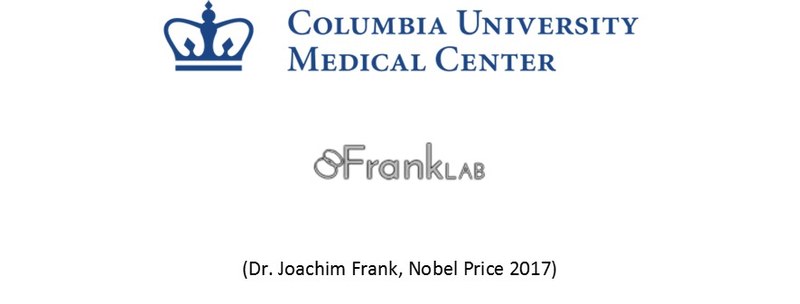Conferència "Cryo-EM studies of 70s ribosome deficient of S2 ribosomal protein and its role on translation of leaderless transcripts"
A càrrec de Francisco Acosta-Reyes, alumne egressat de l'EEBE, que actualment està realitzant un postdoctorat al laboratori FrankLab del Premi Nobel J.Frank a la Universitat de Columbia
- https://eebe.upc.edu/ca/esdeveniments/conferencia-cryo-em-studies-of-70s-ribosome-deficient-of-s2-ribosomal-protein-and-its-role-on-translation-of-leaderless-transcripts
- Conferència "Cryo-EM studies of 70s ribosome deficient of S2 ribosomal protein and its role on translation of leaderless transcripts"
- 2018-11-09T17:00:00+01:00
- 2018-11-09T20:00:00+01:00
- A càrrec de Francisco Acosta-Reyes, alumne egressat de l'EEBE, que actualment està realitzant un postdoctorat al laboratori FrankLab del Premi Nobel J.Frank a la Universitat de Columbia
Quan?
09/11/2018 de 17:00 a 20:00 (Europe/Madrid / UTC100)
On?
Sala Polivalent de l'Edifici I
Afegiu l'esdeveniment al calendari
Francisco Acosta-Reyes and Joachim Frank
Department of Biochemistry and Molecular Biophysics, Columbia University, New York, NY, USA
Department of Biological Sciences, Columbia University, New York, NY, USA
E. coli ribosomes deficient in S2 ribosomal protein translate leaderless transcripts more efficiently than wild-type ribosomes (Shean et al., 1992). Under stress conditions or in the presence of certain drugs ribosomes can lose ribosomal proteins. Bacteria could be exploiting this to modulate translation, increasing the translation of leaderless transcripts. It is believed that translation initiation on a leaderless transcript follows a non-canonical pathway. Initiating occurs directly on the 70S complex rather than on the 40S initiation complex, where the lack of the ribosome-binding site (Shine-Dalgarno sequence) forces the ribosome to use the sequence of the first bases of the transcript as a recognition signal. The initiation codon (AUG) might also work as a recognition signal for positioning of leaderless transcripts. A downstream box (DB) sequence located after the initiation codon can influence translation. These unusual features motivated us to solve the structure by single-particle cryo-EM of a mutant 70S ribosome deficient of S2 protein and a wild-type 70S complex bound to leaderless mRNA in the presence of fmet-tRNAfMet. In the S2-deficient sample, we identified two populations of ribosomes, with and without S2 protein, using 3D focused classification with a mask placed on the S2 protein region. Ribosomes lacking S2 protein also lack protein S21. The absence of S21 could affect the selectivity of recruited mRNA by destabilizing the positioning of the anti-Shine-Dalgarno, allowing an improved translation of leaderless transcripts. From the solved structures we identified an interaction of π-stacking between one of the monitor bases (1493A) and the first base (A) after the initiation codon, which may help to stabilize the leaderless transcript in place for initiation. This interaction is seen in both WT and mutant ribosomes, but has not been observed with transcripts containing a Shine-Dalgarno sequence.
Shean, C.S. and Gottesman, M.E., 1992. Translation of the prophage λ cl transcript. Cell, 70(3), pp.513-522.
E. coli ribosomes deficient in S2 ribosomal protein translate leaderless transcripts more efficiently than wild-type ribosomes (Shean et al., 1992). Under stress conditions or in the presence of certain drugs ribosomes can lose ribosomal proteins. Bacteria could be exploiting this to modulate translation, increasing the translation of leaderless transcripts. It is believed that translation initiation on a leaderless transcript follows a non-canonical pathway. Initiating occurs directly on the 70S complex rather than on the 40S initiation complex, where the lack of the ribosome-binding site (Shine-Dalgarno sequence) forces the ribosome to use the sequence of the first bases of the transcript as a recognition signal. The initiation codon (AUG) might also work as a recognition signal for positioning of leaderless transcripts. A downstream box (DB) sequence located after the initiation codon can influence translation. These unusual features motivated us to solve the structure by single-particle cryo-EM of a mutant 70S ribosome deficient of S2 protein and a wild-type 70S complex bound to leaderless mRNA in the presence of fmet-tRNAfMet. In the S2-deficient sample, we identified two populations of ribosomes, with and without S2 protein, using 3D focused classification with a mask placed on the S2 protein region. Ribosomes lacking S2 protein also lack protein S21. The absence of S21 could affect the selectivity of recruited mRNA by destabilizing the positioning of the anti-Shine-Dalgarno, allowing an improved translation of leaderless transcripts. From the solved structures we identified an interaction of π-stacking between one of the monitor bases (1493A) and the first base (A) after the initiation codon, which may help to stabilize the leaderless transcript in place for initiation. This interaction is seen in both WT and mutant ribosomes, but has not been observed with transcripts containing a Shine-Dalgarno sequence.
Shean, C.S. and Gottesman, M.E., 1992. Translation of the prophage λ cl transcript. Cell, 70(3), pp.513-522.

Comparteix: